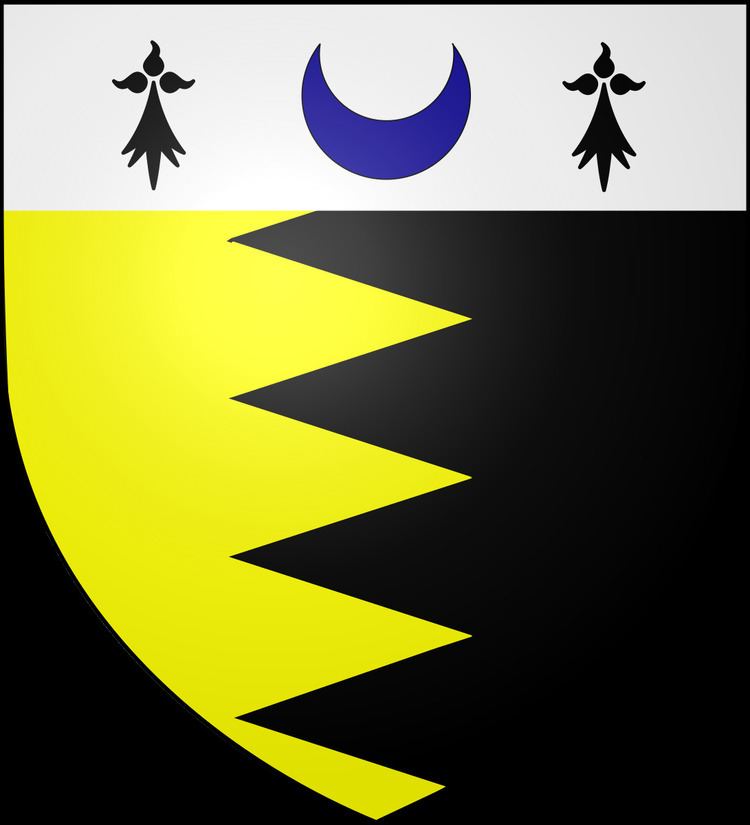Plant badge Cotton grass | ||
 | ||
Motto Sola virtus nobilitat(Virtue alone ennobles) War cry The Hendersons are here! District | ||
The Clan Henderson (Clann Eanruig) is a Scottish clan. The clan's historical seat is at Fordell Castle in Dalgety Bay, Fife. The current clan chief is Alistair Henderson of Fordell.
Contents
Origins
There are three origins for the Scottish surname of Henderson. The Hendersons who lived in the Scottish Borders seem to be simply the sons of Henry, and here the name is often found in the variant of Henryson. Although these Hendersons were not a significant power in the Borders they were still classed as a riding clan. In about 1374 William Henderson was chamberlain of Lochmaben Castle. He is believed to have died in about 1395.
There were also Hendersons who were septs of the Clan MacDonald of Glencoe and septs of the Clan Gunn in the far north of the country. There is no known connection between the Hendersons of Clan Gunn and Clan MacDonald or the Hendersons of the Scottish Borders.
16th century
In 1513 James Henderson of Fordell was killed along with his eldest son at the Battle of Flodden.
The clan spread from Dumfrieshire to Liddesdale, however they do not appear in the list of border clans that were named by Parliament in 1594, when it was attempting to suppress the Border Reivers. From the Dumfrieshire family of Hendersons descended James Henderson or Henryson who became Lord Advocate in about 1494. He was later appointed to the Bench. He acquired lands in Fordell, Fife and erected a mansion (Fordell Castle). Fordell became the designation of the Lowland Henderson chiefs and it is from them that the present chiefs are descended.
17th century and civil war
One of the most prominent of the Clan Henderson was Alexander Henderson of Fordell who was born in about 1583. He was educated at the University of St Andrews where he became a Master of Arts and a Professor of Philosophy before 1611. He later became the minister of the parish of Leuchars and was violently opposed to Charles I's attempts to reform the Church of Scotland. He was especially opposed to the new prayer book and travelled to Edinburgh where he presented a petition to the Privy Council, stating that the book had not received the sanction of the General Assembly of the Church of Scotland or the Parliament. Henderson and Johnston of Warriston together drafted the National Covenant which was first swon and subscribed in Greyfriars Kirk in Edinburgh. Henderson was unanimously elected moderator of the General Assembly in Glasgow in 1638 and was therefore at the forefront of church politics during the troubled reign of Charles I. Henderson was also responsible for drafting the Solemn League and Covenant in 1643. When the king sundered himself to the Scottish army it was to Henderson that he sent to discuss with his disaffected subjects. Henderson met with the king but failed in his attempts to make him accede to the Church's demands. Henderson died due to ill health in August 1646 and was buried in Greyfriars church yard, the scene of his greatest triumph and where there is a monument to him.
Meanwhile, John Henderson, 5th of Fordell fought as a staunch royalist for the king during the Scottish Civil War.
Hendersons of Clan MacDonald of Glencoe
There were Hendersons in the far north of the country who lived in Glen Coe, in the Highlands. The English version of their name is taken from the Gaelic Maceanruig, claiming descent from a Pictish prince, Eanruig Mor Mac Righ Neachtain, or big Henry son of King Neachtain. Neachtain (Nechtan mac Der-Ilei) is said to have reigned between 700 and 724. It is not known when the Hendersons came to Glen Coe but it appears that the last of their chiefs in the direct line produced an heiress, who according to tradition had a son by her lover Aonghus Óg of Islay, and that their son was Ian Fraoch. Ian Fraoch's son was Iain Abrach whose patronymic was MacIain and that became the designation of the chiefs of the MacDonalds of Glencoe. The Hendersons were the body guards of the chiefs of the Clan MacDonald of Glencoe. In 1692 when the Massacre of Glencoe took place, the chief's personal attendant and piper, Big Henderson of the Chanters, who was said to be 6 feet, 7 inches tall, was among those killed.
Hendersons of Clan Gunn
Another group of Hendersons lived in Caithness in the far north of the Scottish Highlands and were part of the Clan Gunn. Hendry, one of the younger sons of a chief of the Clan Gunn in the fifteenth century formed his own sept which took the name Henderson.
Chief
The Chief of Clan Henderson is Alistair Donald Henderson of Fordell, an environmental engineer specialising in air pollution control who lives in Melbourne, Australia. The Chief is recognised by Lord Lyon, King of Arms, and is a member of the Standing Council of Scottish Chiefs.
Clan Castles
Septs
Septs and surname variations of the Clan Henderson include:
Gaelic variations:
Anglicised variations:
among others.
The surname spelling variations arose from regional pronunciation differences, and sometimes perversely creative spelling. Some individuals used multiple surname spellings, and sometimes different surname forms. For example, a traveling Henderson might use the surname MacEanruig in the Scottish Highlands, Henderson in the Lowlands, McHenry in Ulster, and Henry in England.
